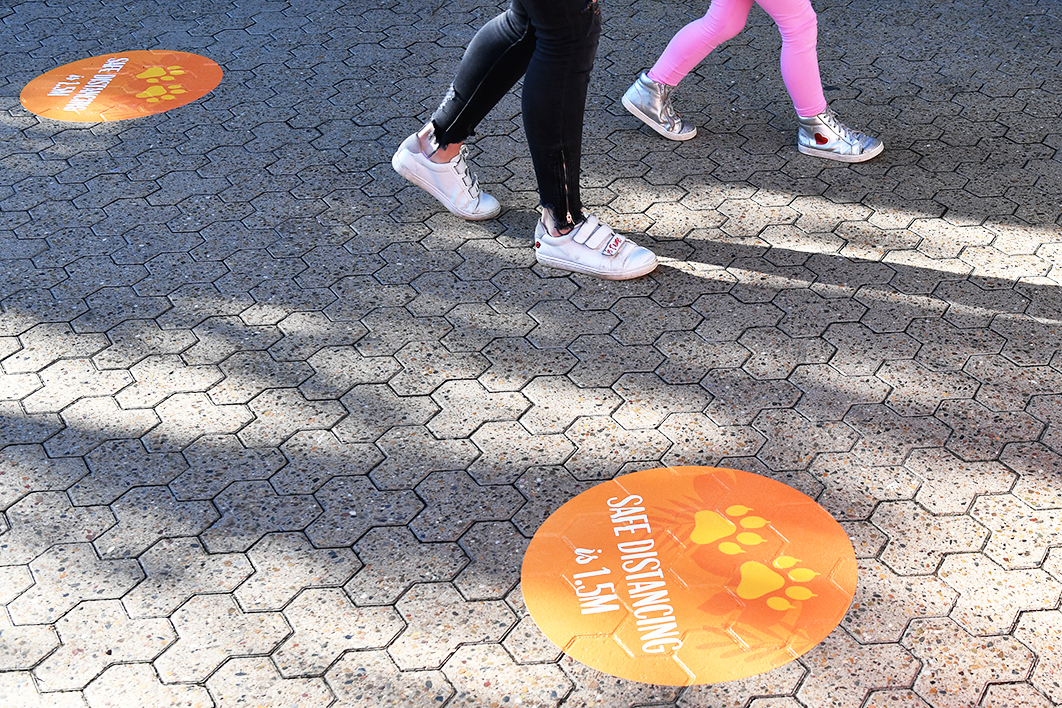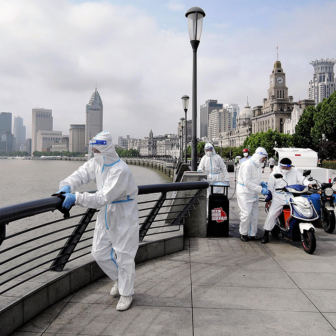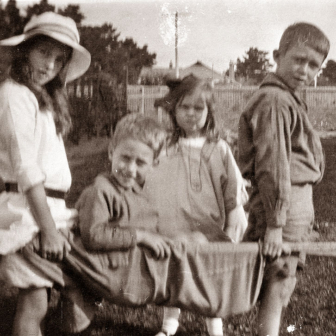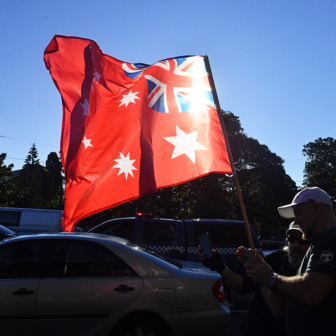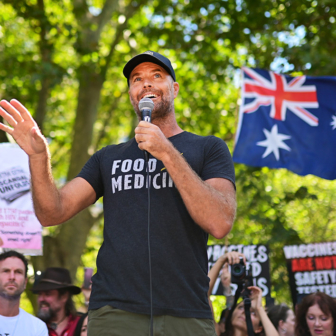The fear on Labor senator Katy Gallagher’s face as she reported that her daughter had contracted Covid-19 would have been understood by anyone with a shred of empathy, and not least by the parents of young children. As she reported in an interview with the ABC’s Michael Rowland on 18 August, her daughter Evie was “lying in bed on her own with terrible symptoms and I can’t do anything about it” and her son, in the next room, was “waiting to catch it.”
The interview hit home: suddenly the political class was talking about children. Until a few days ago, children seemed the last priority in the public debate over vaccination. Not a whisper had come from the NSW government about the hundreds of children now contracting the virus every week. The Sydney Children’s Hospital Network has been treating more than 700 children, most as outpatients, but some in Covid wards. Even at home, as Gallagher’s testimony suggests, infected children will have to spend most of their time alone.
Aside from drawing attention to the very real dangers of Covid for the young, Gallagher’s interview pointed to a gaping hole in a plan that some governments are now championing as the pathway out of the pandemic. Most media attention in recent weeks has naturally focused on Sydney, which its faltering premier is now enjoining us to see as presaging our collective futures: here, apparently, is a community learning to live with the virus. But the reality may well be that Canberra provides as good an indication of at least one of the things that is likely to occur if both Gladys Berejiklian and Scott Morrison get their way: the infection of large numbers of Australian children with the Delta variant.
ACT chief minister Andrew Barr has become increasingly critical of both the risks being posed to us all by the failures of the NSW government, and how the Doherty Institute modelling is being simplified for blatantly political purposes. “I just see young people being horribly exposed by the decision of another government and I don’t know what I can do to protect my community against that,” he told the Guardian on Friday. He also argues that the Doherty modelling is more nuanced than simply envisaging “Freedom Day” as soon as particular vaccination rates are achieved.
As of 20 August, 43 per cent of Canberra’s eighty-three cases were under seventeen. The median age of those infected in the Territory is nineteen-and-a-half. Several schools have experienced clusters, including a large one at Lyneham High School in the city’s inner north. A nightclub has also been a significant site for infection.
Recall how in the early stages of the pandemic, in those simpler, pre-Delta times of 2020, a spirited debate took place about how infectious, and how vulnerable, children were in relation to Covid. Schools, we were eventually told, were safe spaces. The problems were supposedly teachers in small communal lunchrooms and parents gathering at school gates. Morrison wanted schools kept open; some states and territories — and most prominently Victoria — were equally insistent that they should shut, and most children should learn from home.
In March 2020, Peter Collignon, a leading infectious disease expert at the Australian National University, supported schools remaining open, arguing that children were less likely to be infected. “Children will undoubtedly get infected,” he predicted, “but the probability that they will come to serious grief from this seems very low.” Only last month, with the Delta variant running rampant in Sydney, Collignon was urging governments to look for ways to reopen schools, especially primary schools, even if there was still community transmission.
We wonder how Gallagher and the many other families now directly affected by Canberra’s school clusters would react to his claim that “schools are not a big vehicle for transmission.” Worryingly, in Melbourne, where schools have been closed for more than a fortnight, one in four cases are now under nine years of age. This month, Collignon is saying that Delta “is behaving differently, but a big factor here is immunisation, with few people under twenty vaccinated and nobody under ten immunised.”
Indeed. And it appears to have taken the experience of Gallagher’s daughter Evie to awaken the political and media class from its slumber. The belief that Covid poses little risk to children has been reinforced by persistent advice from some health experts that has given the impression to the non-expert among us — like the authors of this article — that young people could catch Covid and get over it rather as one might a common cold. Just keep them away from their grandparents, and all would be well.
There is something odd about the way children have been marginalised during these discussions. The whole thrust of modern history has been to invest more and more value in the lives and wellbeing of children. This was the accompaniment of smaller families and a growing urban middle class. It was also both a cause and consequence of the movements against child labour. Globally, it has resulted in significant investments in prenatal and infant healthcare and the expansion of educational opportunity for children, and especially for girls. It has been accompanied by the development of a rights regime, embodied, for instance, in the United Nations Convention on the Rights of the Child, signed in 1989 and ratified by Australia in 1991.
Yet, leaving aside the efficient vaccination with Pfizer of senior students at one of Sydney’s exclusive private schools and an ill-fated NSW government plan to vaccinate Higher School Certificate students (but not their teachers) in Sydney’s twelve “LGAs of concern,” it apparently took until mid August 2021 for Australia’s political leaders to give more than passing attention to where children actually fit in their pathway back to Covid normal.
This is despite warnings from countries such as India and Brazil where large numbers of children are falling seriously ill, and many have died. That the political and media class have so unquestioningly gone along with the idea that children were at such low risk up to now must be counted among that large and growing list of things that we only half-understood about ourselves before Covid came along to upend our lives: that kids don’t really count for as much as we thought. Delta has dramatically changed the risk profile of the virus for children, but the risks were present even in the early months of the pandemic.
How can we explain so much indifference up to now? How can a country like Britain have an official policy that implicitly accepts letting a dangerous virus loose on an unvaccinated population of children? Should we really contemplate the same thing? How can we make sense of plans to end lockdowns predicated on vaccination rates of 70 and 80 per cent that leave out people under sixteen?
Pfizer, in short supply, has not yet been recommended for use by most children in that age group, while AstraZeneca, the vaccine with which we are best supplied, is only approved for over-eighteens. The general effect of Australia’s mismanagement of the vaccine procurement, rollout and messaging has been to concentrate the vaccine most in demand and least in supply, Pfizer, among the middle-aged. This privileging of adults is a familiar enough story in public policy more generally — think of housing.
The Doherty Institute modelling being used (and arguably misused) by the federal government emphasises the importance of vaccinating those in their twenties and thirties because of their physical mobility. It does contain some modelling based on the vaccination of twelve-to-fifteen-year-olds, but otherwise argues that “the enhanced indirect protection achieved by the ‘All adults’ strategy results in a substantial reduction in symptomatic infections and severe outcomes across all age groups, including unvaccinated children.” In another reference to younger people, it recognises the intense mixing of those aged from fifteen to twenty-four, but its authors are less concerned about “intense school-based mixing” among children aged five to fourteen because of “the relatively low observed infectiousness of this age group, associated with a high proportion of asymptomatic infections.”
It is true that on average a child is far less likely than an older person to die from Covid. But should death be the ultimate measure in such matters? From Britain, we have reports of infected children being ill for more than a year with so-called Long Covid. Some recent reports are indicating that up to 13 per cent of children with the virus are experiencing Long Covid symptoms for many weeks. This is an alarming statistic. Advocacy groups have already begun to mobilise around this issue, and there is growing scepticism about the science informing government policy.
With so little known about the long-term effects of the virus on those infected, including children, is it wise to wind down restrictions that are preventing potentially significant numbers of children falling seriously ill? All this needs to be balanced against the entirely reasonable point that many children are being harmed, in terms of their development, education and mental health, by lockdowns and other restrictions. Much will depend on whether we can get the daily infection rates to lower numbers than anything likely to occur in Sydney any time soon.
Scott Morrison has now announced that Pfizer will be available for all Australians aged sixteen to thirty-nine at the end of the month. This welcome if belated announcement, like all Morrison commitments, is best treated according to the Beach Boys principle: “wouldn’t it be nice?” Let us also speak the language Scott Morrison understands best: people are becoming frightened and there is plenty of political capital in shifting the messaging towards the protection of children, in getting vaccines to everyone twelve or older as soon as possible, and in bringing closer the moment they can return to school with a seriously reduced fear of contracting the virus, or at least of getting seriously ill from it.
Leaving aside the electoral politics, it would be a terrible indictment of our governments if children under sixteen are only being factored into wider plans for ending lockdowns as an afterthought. Andrew Barr has called for more attention to be given to effective vaccination rates, including bringing the rates of children into those population-wide percentages being thrown around by politicians as indicators of what needs to occur before we can all go back to watching the Sharkies.
Yet, for us as historians, the puzzle remains: if children do hold the same social and cultural value that historians claim they have acquired, why have governments not taken more initiative in mobilising them in their public health messaging? The rather sad exception may well be the Victorian government, whose decision to shut Melbourne’s playgrounds led one Liberal MP to take his three-year-old daughter to a closed playground as a photo stunt.
There has quite rightly been considerable anger about the slackness and inefficiency of governments in looking after the elderly during this pandemic. There has also been an alarming callousness among some media commentators about the rights of the old and frail to be protected from harm. This is a group that is known to be highly vulnerable to the virus. It is a lamentable failure of public policy that there are still many aged care workers who are not vaccinated.
The elderly differ from the young in that they have votes. But they share with the young a remoteness from many of the major platforms used by those who have interests to protect and views to broadcast. Would we have seen such a casual attitude to children and the virus if they had votes and the means to amplify their voices in public debate?
Before the pandemic, the voices of children were being heard on climate change around the world, including in Australia — despite the efforts of politicians, police and right-wing media to silence them. Covid has done what the authorities could not. It has silenced children in mainstream media discourse in a profound way. They have been subsumed within the “family unit” as just another member of a locked-down household, as the object of “home schooling” (as it is erroneously called) and as a distraction for adults “working from home,” perhaps while making cameo appearances in the background of a Zoom meeting.
We might be learning another lesson from the pandemic: while we might be all in this together, some of us seem to matter a great deal more than others. •
